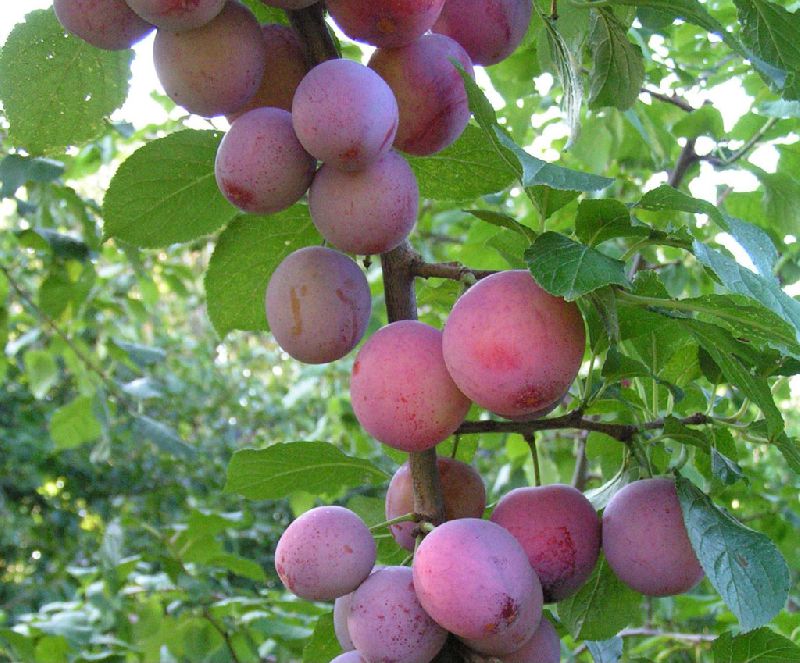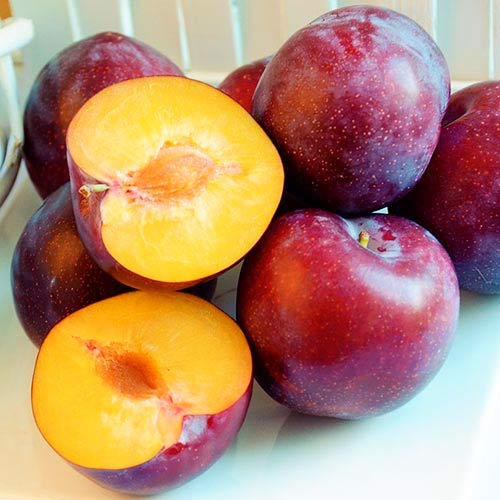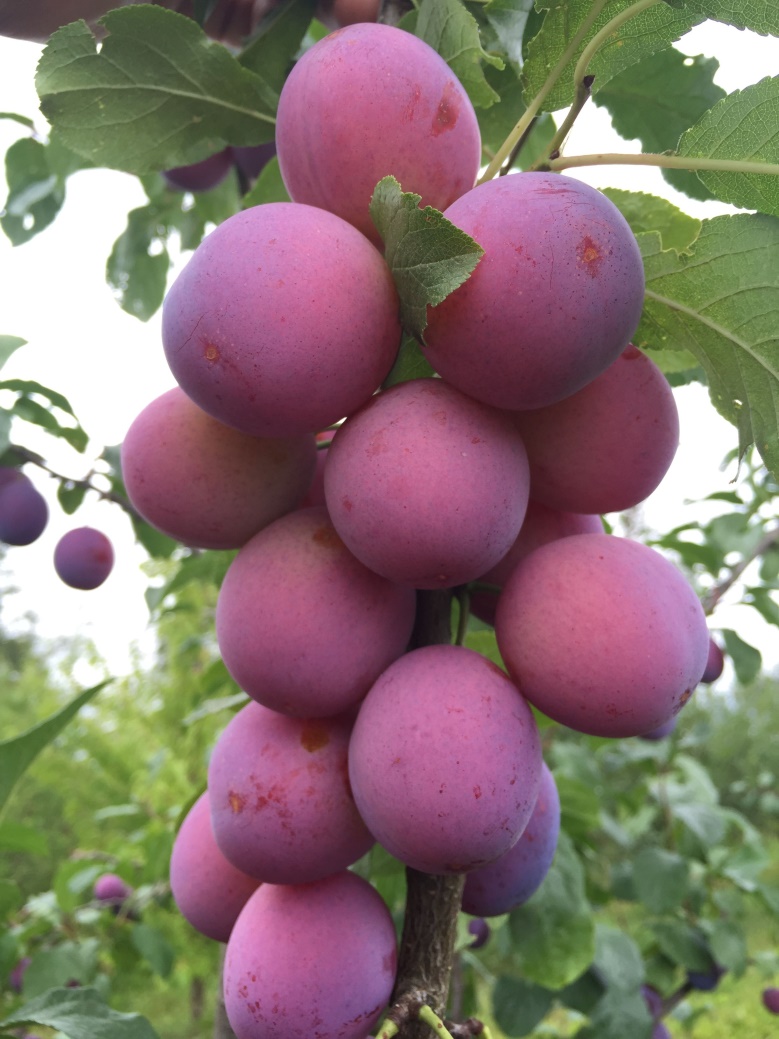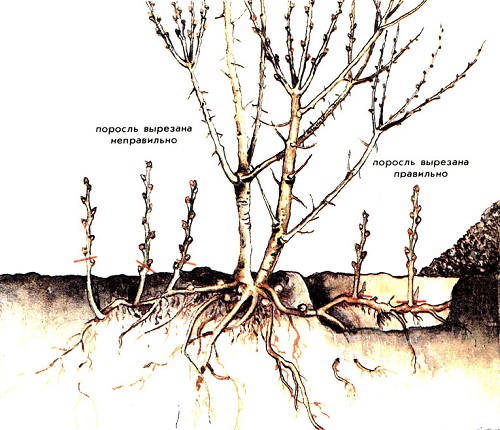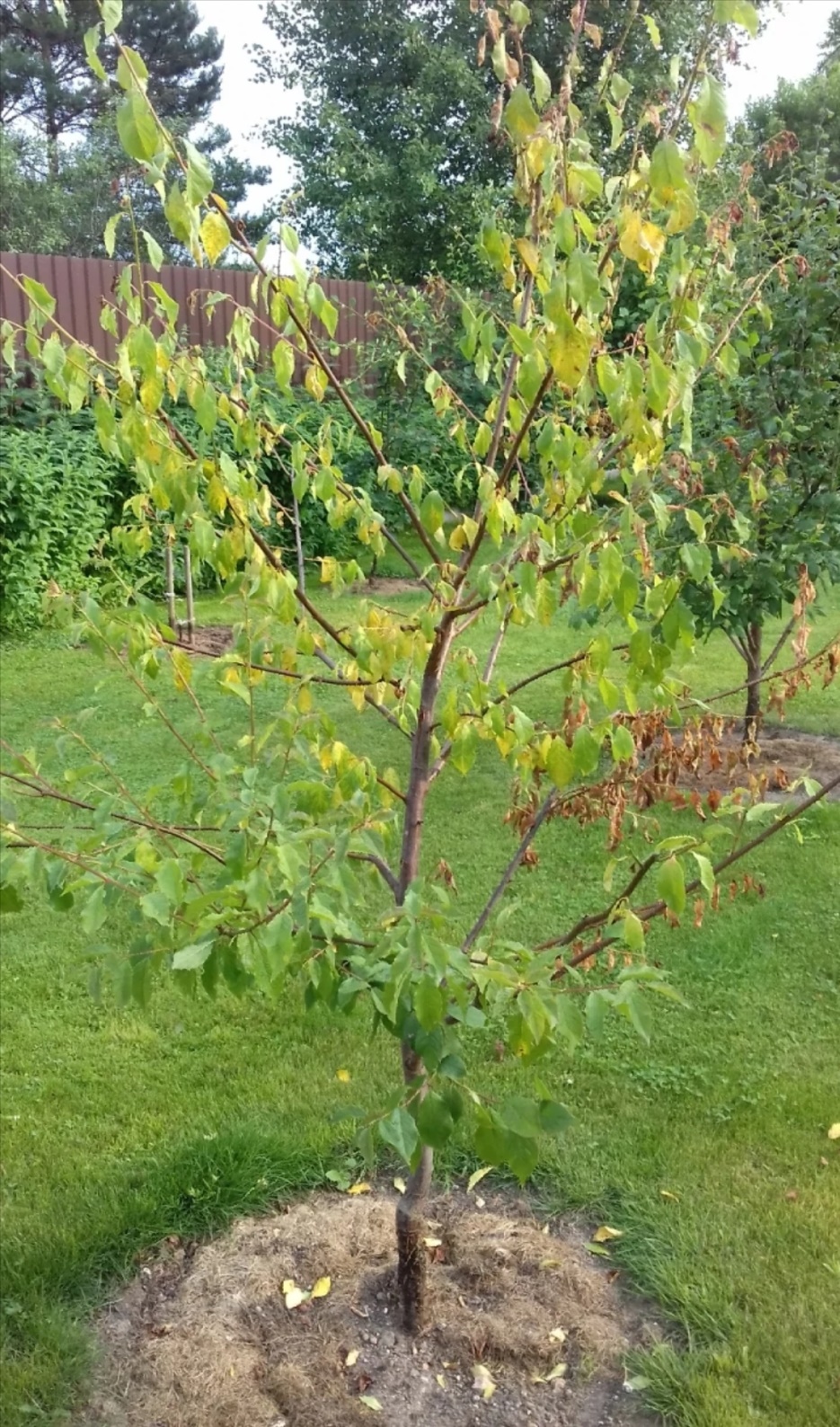Content
Plum Delicate is a mid-early variety with large appetizing fruits. A vigorous tree with a stable yield, unpretentious to the place of cultivation. The variety resists many diseases typical of plums.
Breeding history of the variety
Plum Delicate received by Belarusian breeders. A productive tree was bred on the basis of a persistent interspecific hybrid of the Russian selection Eurasia 21 and an old variety from Western Europe, Hungarian Azhanskaya.
Description of plum variety Delicate
The variety is distributed in the climatic conditions of the central regions of Russia. Plum tree Delicate tall, grows up to 3-4 m, the average growth of shoots per season is 30-40 cm. 3-year-old seedling reaches 1.8-2 m in height. The bark of the branches is smooth, light brown. The tree of the variety forms a rounded, spreading crown. Leaves Delicate medium size, oval-oblong, slightly wrinkled, finely toothed at the edges, with a pointed tip. The upper part of the leaf blade is smooth, dark green, the lower part is matte. The flowers of the Delicate plum variety are small, white, created on short bouquet branches.
Large, even plum fruits are round, with a weakly pronounced seam, weigh up to 40 g. The skin is thin, tender when consumed, well eaten. The cover shade of the Delicate variety is pink-lilac, with a slight waxy bloom. The yellow pulp is juicy, medium density. A small oval bone with the pulp is loosely connected, freely removed from the fruit. Plum to taste Delicate, pleasant, sweet, with a pronounced attractive sourness, aromatic. Rated by tasters at 4.3 points.
The mouth-watering and healthy fruits have the following composition:
- 8% sugars;
- 14% dry matter;
- 0.6% pectin;
- 12.6 mg of ascorbic acid in 100 g.
Variety characteristics
The palatability of the Delicate plum fruit is tempting, and many gardeners acquire a new variety while studying the peculiarities of the wood at the same time.
Drought resistance, frost resistance
Plum Delicate is characterized as a winter-hardy tree, but sensitive to root damping. In March, a gardener needs to monitor the process of snow melting near the trunk and scatter the caked mass in time or break the crust, forming a future trickle so that the water does not collect around the tree, but leaves it. The variety tolerates short sultry periods painlessly. But abundant watering once a month in the absence of rainfall must be carried out, especially in the phase of buds and the creation of ovaries. Also, moisture-charging irrigation helps the drain to prepare for winter, which is carried out in late September - early October.
Plum pollinators
The Delicate variety is partially self-fertile. An additional 2-3 plum trees should be planted in the garden, which bloom at the same time, to form the expected yield. Some reviews indicate that the best pollinating varieties for Delikatnaya are the long-known European plums of Edinburgh and Victoria. Flowering begins in May, fruits ripen in August.
Productivity and fruiting
Collecting plums from one tree that has reached the age of ten is abundant: 35 or 40 kg. In industrial horticulture, the figure is 25 tons per hectare. Fruiting in the Delikatnaya variety is annual, begins 3-4 years after planting. Bouquet twigs on the shoots are often created. At the end of summer, the branches are literally hung with lilac-pinkish plums.
Scope of berries
Delicious fruits with a dessert flavor are desirable to be consumed fresh. The surplus is used for homemade preparations: compotes, jams, especially since the fruits are quickly processed thanks to the easily separating bone. Plums are also dried and frozen.
Disease and pest resistance
The variety is not very susceptible to fungal infections. The resistance of the Delicate to the causative agents of clasterosporium is especially high. With proper agricultural practices: timely watering and fertilizing, harvesting fallen leaves and sanitary pruning - insect pests do not linger in the garden. Preventive spring treatment of the garden with fungicides or copper sulfate is also of great importance.
Advantages and disadvantages of the variety
Delicate owes its popularity to its beautiful appearance, refreshing taste of fruits and reliable qualities of wood:
- high consumer performance;
- early maturity, mid-early ripening and stable yield;
- winter hardiness and drought resistance;
- unpretentiousness;
- low susceptibility to typical diseases of plums.
The disadvantages can be considered specific features:
- low or zero self-fertility;
- obligatory systematic pruning, preventing thickening of the crown of a vigorous plum variety.
Landing features
Plum Delicate gives a high yield if planted in a convenient place and according to the requirements of agricultural technology.
Recommended timing
In the middle lane, the plum is planted in the spring: the tree takes root better. In the southern regions, the variety is planted in the fall, until mid-October. Seedlings Delicate in containers do not depend on weather conditions.
Choosing the right place
Loose and fertile soil with groundwater up to 1.5 m is the main requirement for the Delikatnaya variety. Plums take root anywhere where there is no stagnant water and cold frontal winds.
What crops can and cannot be planted nearby
- Having retreated from the Delicatnaya sapling by 3 m, other plums or berry bushes are planted.
- A good neighborhood is an apple tree, but care must be taken that it is not a tall variety that shades the sun for a plum. The same applies to pears.
Selection and preparation of planting material
- One- or two-year-old trees are planted, healthy in appearance.
- The bark is intact, the branches are elastic, with swollen buds, if there are green leaves in containers.
- The roots are moist, fresh, collected in a voluminous lobe.
- Before planting, the roots of the seedlings are moistened in a clay solution.
- The containers are placed in large containers so that the substrate gets wet and the roots come out freely.
Landing algorithm
- A pit for a plum tree measuring 60 * 80 * 80 cm is prepared 14-16 days before planting.
- Lay a thick layer of sand and ceramics to drain the soil.
- A stable peg is driven into the substrate to support the plum tree.
- The seedling is placed on a mound, spreading the roots.
- The root collar of the plum is kept at a height of 4–7 cm from the surface.
- Sprinkle with earth, tamp and make sides for a circular irrigation groove.
- After watering, the trunk circle is mulched.
- The plum is pruned: the central conductor and strong shoots by three quarters.
Plum follow-up care
Care of the Delicate variety is uncomplicated:
- periodically loosen and mulch the trunk circle after watering;
- moisture once a month should penetrate to a depth of 40 cm, where the main accumulation of plum roots is located;
- plums are fed with balanced complex fertilizers;
- in autumn, humus serves as mulch, in a layer of up to 10 cm;
- if a pyramidal crown is formed in Delicatnaya, all branches are removed that grow narrower than at an angle of 45 degrees relative to the conductor;
- every year the plum is cleaned of overgrowth, damaged and dry branches, as well as those that cross.
After water-charging irrigation, a thick layer of mulch is placed, and before frost, the young plum is covered with a net from rodents and protected with agrotextile or paper.
Diseases and pests, methods of control and prevention
Diseases | Symptoms | Treatment | Prophylaxis |
Moniliosis | Dry tops of branches, rotten fruits | Remove branches with affected fruits | Copper treatment, leaf harvesting |
Rust | Rusty, rounded spots on early falling leaves. The tree is weakening | Spring processing | Cleaning leaves, digging the soil |
Pests | Signs | Control methods | Prophylaxis |
Plum moth | Fruit with holes | Insecticides | Removing damaged bark |
Wrinkled sapwood | Moves in the bark, death of shoots | Insecticides | Removing damaged bark |
Conclusion
Plum Delicate is an unpretentious crop with universal fruits for winter preparations and as a fresh dessert. The variety is attractive for the resistance of wood and buds to moderate frosts, low susceptibility to pathogens of dangerous fungal diseases.
